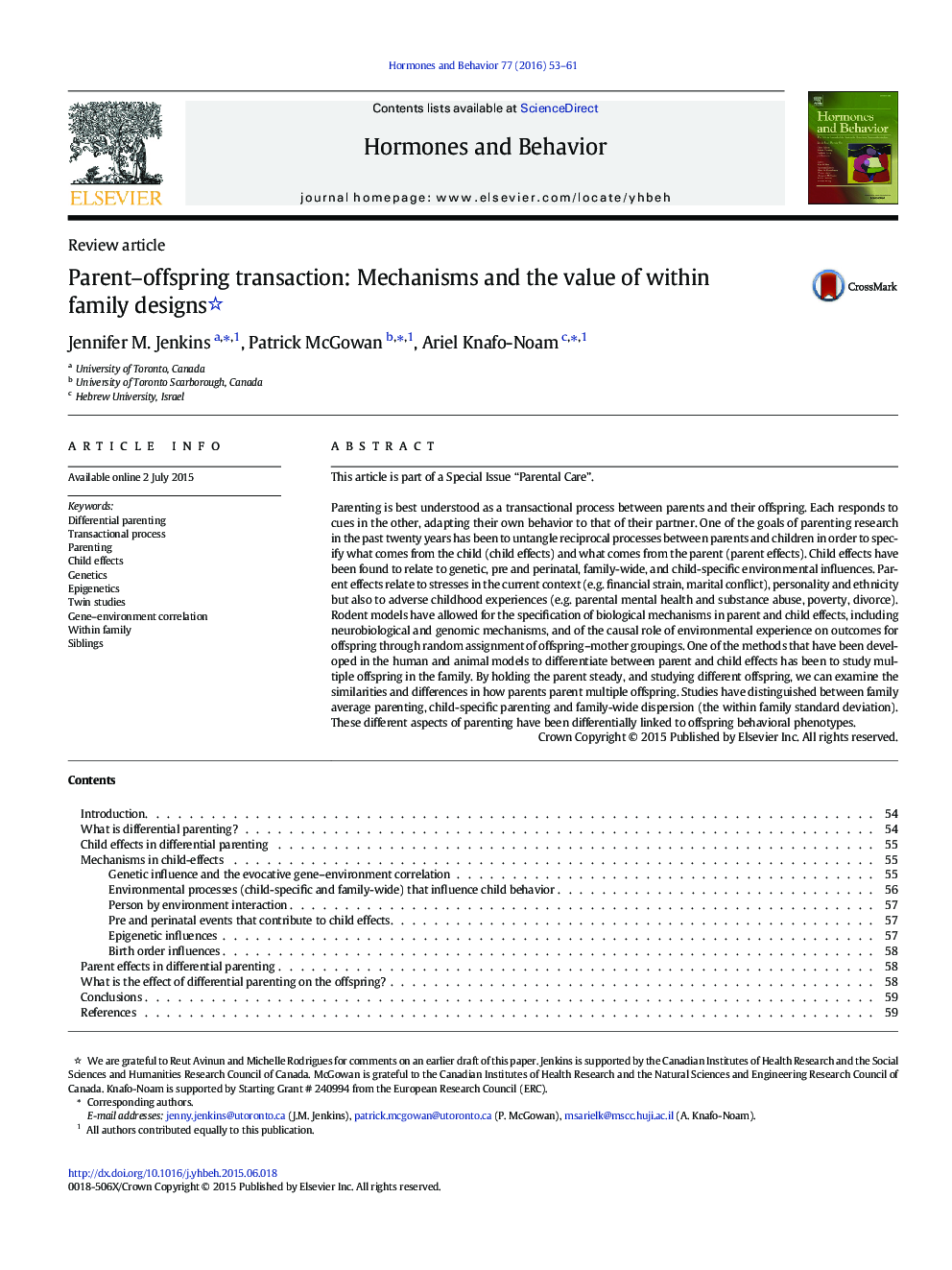| کد مقاله | کد نشریه | سال انتشار | مقاله انگلیسی | نسخه تمام متن |
|---|---|---|---|---|
| 323056 | 540480 | 2016 | 9 صفحه PDF | دانلود رایگان |
• Characteristics of children that explain differential parenting
• Mechanisms in child effects
• Psychosocial adversity associated with higher differential parenting
• Effect of differential parenting on offspring
This article is part of a Special Issue “Parental Care”. Parenting is best understood as a transactional process between parents and their offspring. Each responds to cues in the other, adapting their own behavior to that of their partner. One of the goals of parenting research in the past twenty years has been to untangle reciprocal processes between parents and children in order to specify what comes from the child (child effects) and what comes from the parent (parent effects). Child effects have been found to relate to genetic, pre and perinatal, family-wide, and child-specific environmental influences. Parent effects relate to stresses in the current context (e.g. financial strain, marital conflict), personality and ethnicity but also to adverse childhood experiences (e.g. parental mental health and substance abuse, poverty, divorce). Rodent models have allowed for the specification of biological mechanisms in parent and child effects, including neurobiological and genomic mechanisms, and of the causal role of environmental experience on outcomes for offspring through random assignment of offspring–mother groupings. One of the methods that have been developed in the human and animal models to differentiate between parent and child effects has been to study multiple offspring in the family. By holding the parent steady, and studying different offspring, we can examine the similarities and differences in how parents parent multiple offspring. Studies have distinguished between family average parenting, child-specific parenting and family-wide dispersion (the within family standard deviation). These different aspects of parenting have been differentially linked to offspring behavioral phenotypes.
Journal: Hormones and Behavior - Volume 77, January 2016, Pages 53–61
